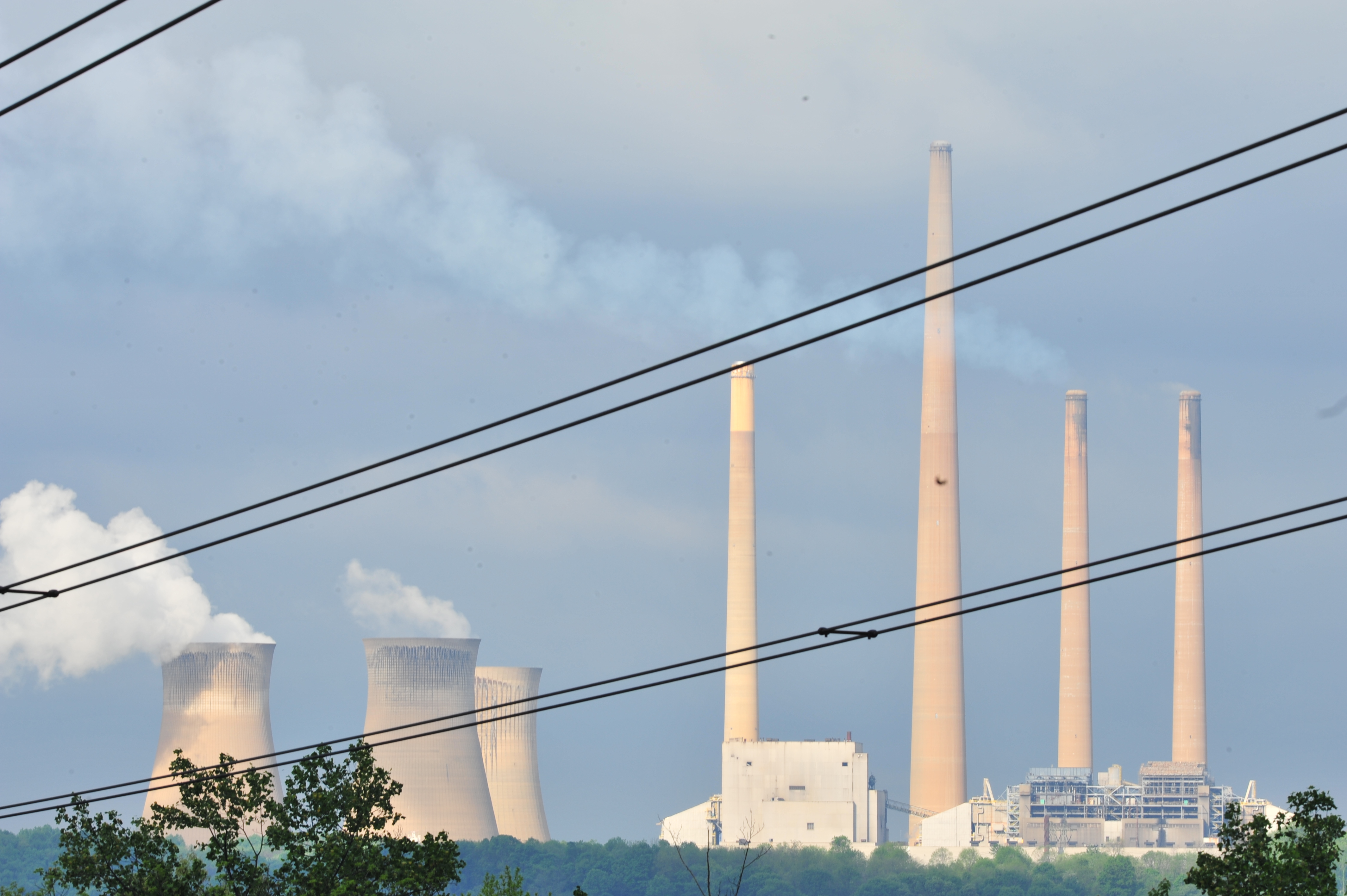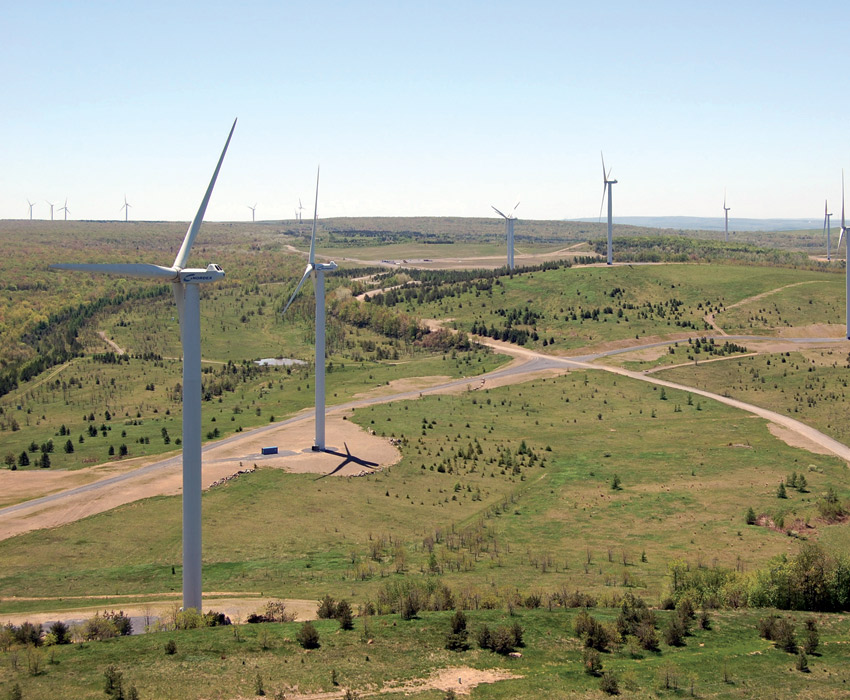This is the first in a series of blog posts that explore how we can transition to a just, equitable, and carbon-free economy in Pennsylvania.
The fossil fuel economy has been a part of Pennsylvania since the industrial revolution. We currently rank 2nd among states for fracked gas production, 4th in coal production, and 3rd in energy-related carbon pollution. Globally, we are responsible for 1% of all carbon pollution, despite accounting for only 0.17% of global population, and we as a Commonwealth have a larger carbon footprint than all but 22 nations.

Homer City coal-fired power plant in Indiana County, PA (photo credit: Mark Schmerling)
But we also know that human-caused climate disruption is happening even faster than predicted. Already this year we have seen all kinds of extreme weather across Pennsylvania, from extended arctic cold, to record February rainfall leading to floods and landslides, to spring nor’easters, to heat waves that bring dangerous air pollution destructive storms. All these events can be tied to fundamental changes in our atmosphere and will occur more and more frequently as carbon dioxide and methane concentrations continue to increase. To avoid the human toll and stabilize the climate, we have to wean ourselves off of fossil fuels almost completely by mid-century.
It’s time for us to move to renewable energy to power our state. Fortunately, this path will not only enable us to meet the challenge posed by climate change, but also has the potential to create nearly 400,000 40-year jobs across the Commonwealth, a figure that is roughly ten times the number of people working in fossil fuel-related industries currently. In fact, there are already over 86,000 clean energy jobs in PA, and we’ve barely scratched the surface of the economic potential. Along the way, we’ll eliminate the majority of air pollution that currently leads to thousands of premature deaths each year and countless asthma attacks and hospital visits.

Wind farm in Cambria County on former strip mine. Photo courtesy of Everpower Wind Holdings.
What does our preferred energy future look like? By 2050, we will not only get all our electricity from clean, renewable sources like wind and solar energy, but we will also drive our transportation system and heat our homes and workplaces with those same sustainable sources. The future we strive for is also free of long-standing economic and racial inequities, including disparate energy-related health and environmental burdens on communities, and is characterized by quality employment opportunities for everyone. We want our clean energy transition to reduce inequities, not perpetuate or exacerbate them.
In all honesty, we know it will be hard work and we’ll need a lot of help to accomplish this vision. But it needs to be done, and we have a pretty good start to build on.
Over the past decade we’ve been working at the federal, state, and individual plant level to close many regulatory loopholes that allowed old, dirty coal plants to pollute our communities by pushing their costs off onto the air-breathing, water-drinking public. We’ve also been pushing for more rapid adoption of wind and solar as the price of those technologies has plummeted, and ambitious investments in energy efficiency to reduce demand. As a result of this progress, nearly half (16 of the 34) coal plants that existed in PA in 2010 have either retired, plan to retire, or have otherwise stopped burning coal. Even the remaining plants run less as they become less competitive; the total amount of coal burned to produce electricity in PA has dropped by an incredible 56% since 2010. While it is unfortunately true that use of fracked gas for electricity has risen during that time to offset some of the gains, the combined amount of fossil fuels burned for electricity has dropped by nearly a third across the Commonwealth in a relatively short period of time.
Part of this progress is due to a 5% decline in electricity consumption over that period. There has also been a 48% increase in combined generation from wind, solar, and hydropower, although there is much room for improvement there. Much of the declines in fossil fuel use are actually due to decreased exports to neighboring states as they ramp up their own efficiency programs faster than we are.
Clearly though, we have a lot more to do, and the fight to decarbonize energy is changing. Until now, we have largely focused on using federal laws like the Clean Air Act and Clean Water Act to hold polluters accountable and level the playing field for clean energy and efficiency. For example, we recently reached an historic settlement with the PA Department of Environmental Protection to update 10 expired coal plant water pollution permits to significantly reduce discharges of heavy metals and other toxins into our rivers and streams. But we are running out of these opportunities as most of the remaining coal plants, and nearly all existing and new fracked gas plants, as polluting as they still are, are generally in compliance with our modest environmental laws. We’ll continue to go after the worst plants that jeopardize public health, but we must take the decarbonization fight to new venues to make significant new progress.
In the next few months we will explore some of these new challenges and opportunities. Each post will attempt to break down a new topic, examine its implications for our clean energy transition, including how different people and communities might feel those impacts differently, and suggest some ways to help make positive change. Hopefully, we’ll emerge better prepared to advocate for federal, state, and even local policies that can help us realize our lofty and essential vision. Be on the lookout for the next post, which will deal with our regional energy markets, how they are biased toward dirty energy, and how you can help change that.
Tom Schuster started with Sierra Club's Beyond Coal campaign 2012, after having served as the first Sustainability Officer at the City of Las Cruces, NM. He studied ecology and energy policy in college and works to limit pollution from power plants and promote clean energy policies. Tom can be reached at tom.schuster@sierraclub.org.